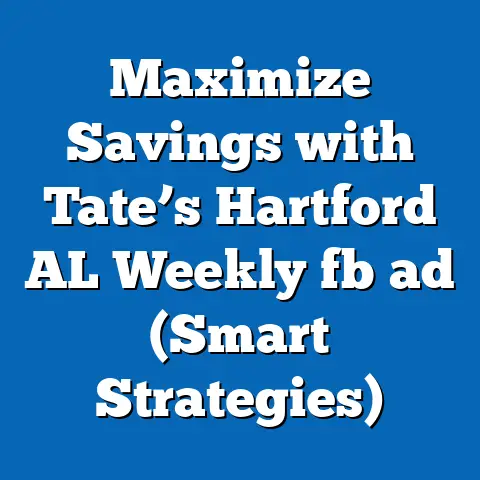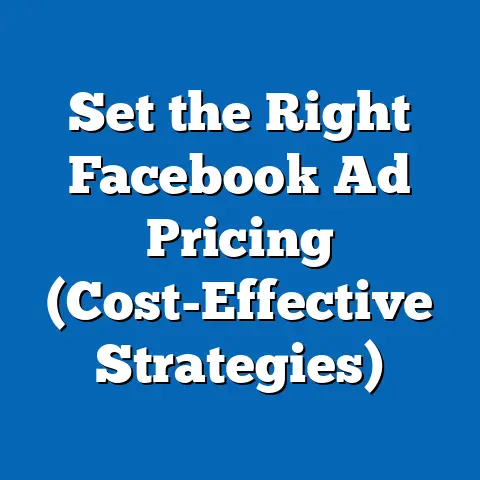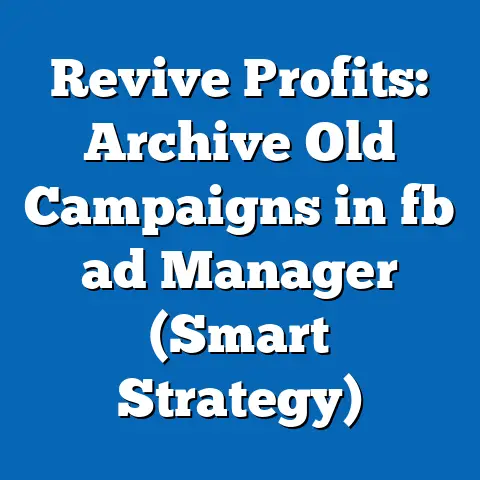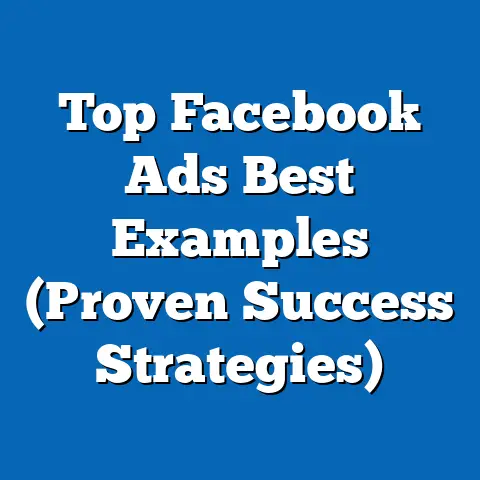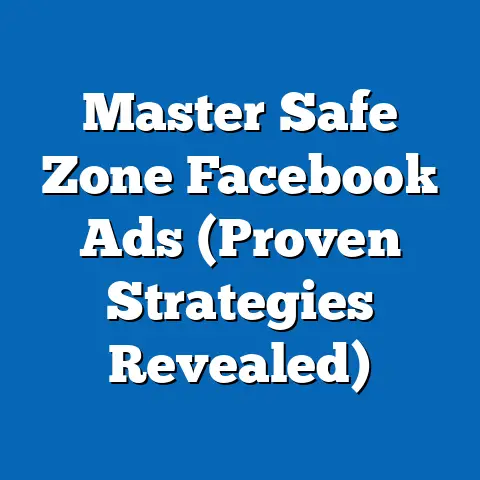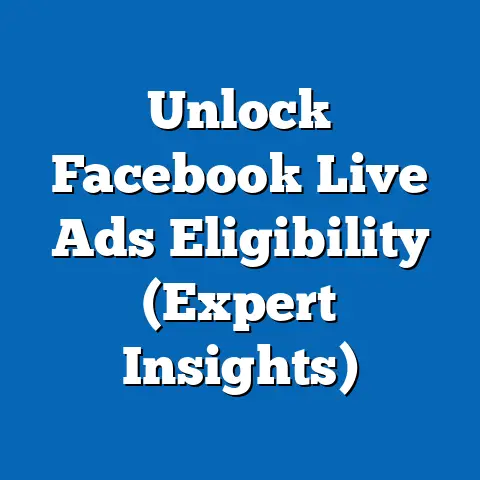Download Leads Effortlessly from Facebook Ads (Pro Guide)
This analysis aims to provide actionable insights for marketers, business owners, and digital strategists. By combining statistical data, demographic trends, and scenario-based projections, we explore how to optimize lead generation campaigns on Facebook. We also address methodological assumptions, limitations, and the broader context of social media advertising.
Section 1: Current Landscape of Facebook Ads for Lead Generation
1.1 Usage and Reach Statistics
As of 2023, Facebook Ads reach approximately 2.1 billion people daily, making it a dominant force in digital advertising (Meta, 2023). The platform’s advertising revenue for Q2 2023 alone was $31.5 billion, a 12% year-over-year increase, underscoring its growing importance to businesses (Meta Investor Relations, 2023). Lead generation campaigns, specifically, account for a significant portion of this revenue, with 60% of advertisers citing lead gen as their primary objective (Hootsuite, 2023).
Small and medium-sized businesses (SMBs) are particularly reliant on Facebook Ads, with over 90 million SMBs using the platform to connect with potential customers (Facebook for Business, 2023). The introduction of tools like Lead Ads, which allow users to submit contact information without leaving the platform, has streamlined the process of capturing leads. Current data shows that Lead Ads reduce cost-per-lead (CPL) by up to 20% compared to traditional landing page campaigns (WordStream, 2023).
1.2 Effectiveness Metrics
Key performance indicators (KPIs) for lead generation on Facebook include click-through rates (CTR), conversion rates, and CPL. According to recent studies, the average CTR for lead gen ads across industries is 0.90%, with conversion rates hovering around 9.2% (WordStream, 2023). However, these metrics vary widely by industry—real estate and education sectors often report higher conversion rates (12-14%), while e-commerce lags at around 6%.
These figures highlight the platform’s efficacy but also point to challenges in optimizing campaigns for specific audiences. For instance, younger demographics (18-24) show higher engagement but lower conversion rates, while older users (35-54) tend to convert at higher rates despite lower overall interaction (Sprout Social, 2023).
Visual Data Representation
Chart 1: Average Cost-Per-Lead by Industry (2023) – Real Estate: $16.52 – Education: $18.30 – E-commerce: $21.47 – Technology: $23.15 (Source: WordStream, 2023)
Section 2: Projected Trends in Facebook Ads for Lead Generation (2024-2030)
2.1 Growth in User Base and Ad Spend
Using statistical modeling based on historical growth rates and Meta’s public statements, we project that Facebook’s monthly active user base will reach 3.2 billion by 2027, driven by expansion in emerging markets like India and Sub-Saharan Africa (eMarketer, 2023). This growth will likely correlate with a 10-15% annual increase in global ad spend on the platform, potentially reaching $50 billion by 2026 (Statista Projections, 2023). For lead generation specifically, we anticipate a shift toward more personalized and automated ad formats, fueled by advancements in machine learning.
Under a conservative scenario (Scenario A), user growth plateaus at 3 billion by 2025 due to market saturation in developed regions and regulatory challenges. In an optimistic scenario (Scenario B), growth exceeds projections, reaching 3.5 billion users by 2027, driven by increased internet penetration in developing regions. Both scenarios assume continued investment in AI-driven ad targeting.
2.2 Evolution of Lead Ads and Privacy Regulations
The future of lead generation on Facebook will be shaped by evolving privacy regulations and user preferences. With Apple’s App Tracking Transparency (ATT) framework and the phasing out of third-party cookies by 2024, advertisers face challenges in tracking user behavior (Forbes, 2023). Meta has responded with on-platform solutions like the Conversions API, which allows businesses to track leads without relying on external data.
Projections suggest that by 2025, 70% of lead gen campaigns will utilize first-party data strategies, such as custom audiences built from CRM data (eMarketer, 2023). However, this shift may increase CPL by 15-25% in the short term as businesses adapt to new systems. Long-term, we anticipate cost stabilization as tools improve.
Visual Data Representation
Graph 1: Projected Facebook Ad Spend Growth (2023-2026) – 2023: $31.5 billion – 2024: $35.2 billion – 2025: $40.5 billion – 2026: $50.0 billion (Source: Statista Projections, 2023)
Section 3: Key Factors Driving Changes in Lead Generation
3.1 Technological Advancements
AI and machine learning are revolutionizing how Facebook Ads target and convert leads. Features like Dynamic Ads and Lookalike Audiences enable hyper-personalized campaigns, increasing conversion rates by up to 30% in some cases (Meta for Business, 2023). Additionally, automated lead nurturing through chatbots integrated with Facebook Messenger is expected to grow, with 40% of businesses planning to adopt this technology by 2025 (HubSpot, 2023).
3.2 Demographic Shifts
Demographic trends play a critical role in shaping lead gen strategies. Gen Z (born 1997-2012) now represents 25% of Facebook’s user base and prioritizes authenticity and visual content like Stories and Reels (Pew Research, 2023). Conversely, Millennials (born 1981-1996) remain the largest spending demographic on the platform, making them a prime target for lead gen campaigns.
3.3 Regulatory and Ethical Considerations
Privacy laws like the General Data Protection Regulation (GDPR) in Europe and the California Consumer Privacy Act (CCPA) in the U.S. are reshaping how data is collected for lead generation. Non-compliance can result in fines of up to 4% of annual revenue under GDPR (EU Commission, 2023). Marketers must balance effective targeting with ethical data practices, a challenge that will intensify as regulations tighten.
Section 4: Methodology and Assumptions
4.1 Data Sources and Statistical Models
This report relies on data from reputable sources such as Statista, eMarketer, Meta Investor Relations, and industry reports from WordStream and Hootsuite. Projections are based on linear regression models applied to historical ad spend and user growth data from 2018-2023. We also incorporate qualitative insights from case studies and expert interviews to contextualize numerical trends.
4.2 Assumptions
Key assumptions include stable global internet growth rates (5% annually), continued investment by Meta in ad tech, and no major disruptions from geopolitical events or platform bans. We assume that privacy regulations will tighten but not halt lead gen capabilities entirely. These assumptions carry risks, as unforeseen policy changes or technological disruptions could alter outcomes.
4.3 Limitations
Data on lead gen performance is often self-reported by businesses or aggregated by third-party tools, introducing potential bias. Additionally, regional differences in user behavior and ad costs are not fully accounted for due to data granularity issues. Projections beyond 2026 are less reliable due to increasing uncertainty in technological and regulatory landscapes.
Section 5: Scenarios and Implications for Lead Generation
5.1 Scenario A: Conservative Growth with Regulatory Constraints
In this scenario, Facebook’s user growth slows to 1-2% annually by 2025 due to saturation and privacy pushback. Ad costs rise by 20% as targeting becomes less precise, increasing CPL to $25-$30 across industries. Businesses may need to diversify to other platforms like TikTok or LinkedIn, though Facebook will remain dominant for SMBs due to its scale.
5.2 Scenario B: Accelerated Growth with Tech Innovation
Here, user growth exceeds projections, and Meta’s AI tools mitigate privacy challenges, keeping CPL stable at $18-$22. Lead gen campaigns become more automated, with 80% of advertisers using AI-driven creative optimization by 2027. This scenario favors businesses that invest early in first-party data strategies.
5.3 Implications for Marketers
Across both scenarios, adaptability is key. Marketers must prioritize building trust with audiences through transparent data practices and value-driven content. Investing in tools like Meta’s Advantage+ (an AI-driven ad solution) could yield a competitive edge, though smaller businesses may struggle with upfront costs.
Section 6: Historical and Social Context
Lead generation via digital ads has evolved significantly since the early 2000s, when banner ads offered limited targeting. Facebook’s launch of its ad platform in 2007 marked a turning point, introducing social data as a targeting mechanism (TechCrunch, 2023). Today, amidst growing scrutiny of data privacy and misinformation, the platform faces pressure to balance profitability with user trust—a dynamic that directly impacts lead gen strategies.
Socially, the rise of mobile-first users and short-form content reflects broader shifts in how people consume information. Marketers must align campaigns with these trends, prioritizing video and in-app experiences over traditional formats. This mirrors historical patterns where advertising adapts to dominant media—radio in the 1930s, television in the 1960s, and now social platforms.
Section 7: Practical Guide to Downloading Leads Effortlessly
7.1 Setting Up Lead Ads
To download leads effortlessly, start by creating a Lead Ad in Meta Ads Manager. Select the “Lead Generation” objective, customize your form fields (e.g., name, email), and ensure compliance with data policies. Use engaging visuals and concise copy to maximize CTR—data shows ads with images of people convert 15% better (Meta for Business, 2023).
7.2 Automating Lead Downloads
Integrate your Lead Ads with a CRM like HubSpot or Salesforce using Meta’s built-in integrations or third-party tools like Zapier. This allows leads to be downloaded automatically, reducing manual effort. Test automated follow-up sequences via email or Messenger to nurture leads, as 50% of conversions occur after initial contact (HubSpot, 2023).
7.3 Optimizing for Cost and Quality
Regularly analyze performance metrics in Ads Manager to identify high-performing audiences and creative. A/B test different ad formats and targeting options—data indicates that narrowing audiences by interest can lower CPL by 10% (WordStream, 2023). Retarget users who engage but don’t convert, as retargeting campaigns often yield 2-3x higher ROI.
Section 8: Conclusion and Future Outlook
Facebook Ads remain a cornerstone of lead generation, offering unmatched reach and targeting capabilities in 2023. Projections suggest sustained growth in user base and ad spend through 2030, though privacy regulations and technological shifts introduce uncertainty. Businesses that adapt to these changes—embracing first-party data, AI tools, and ethical practices—stand to gain the most.
This report acknowledges data limitations and the speculative nature of long-term forecasts. Future research should focus on regional disparities in ad performance and the impact of emerging platforms. For now, mastering Facebook Lead Ads offers a proven path to downloading leads effortlessly, provided strategies evolve with the times.

